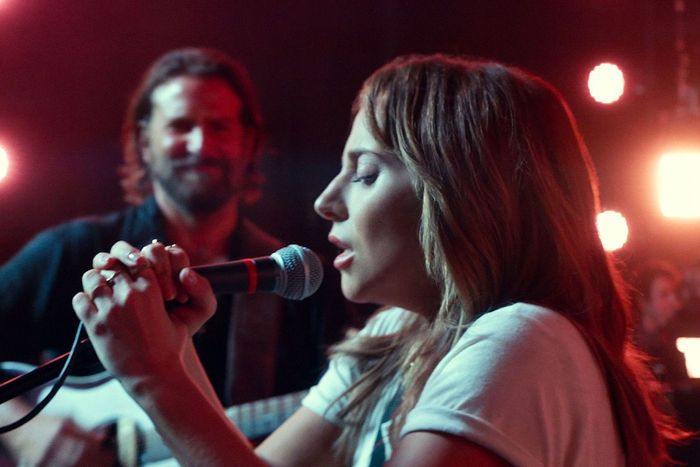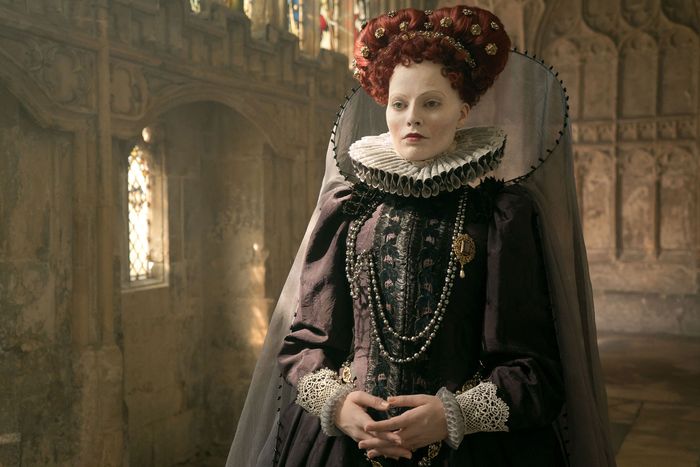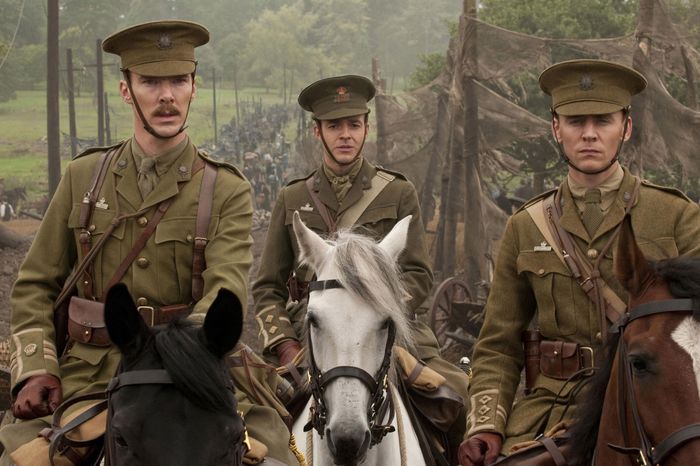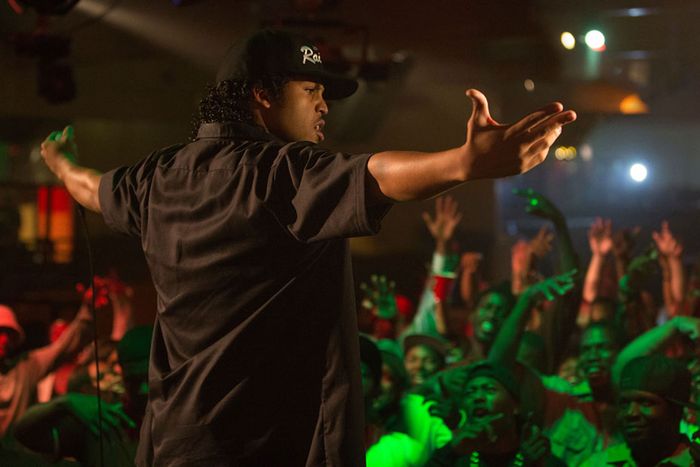
Without fail, each year brings a film or two that makes people ask, “How was that nominated for an Oscar?!”
While it’s easy to imagine the Academy Awards being decided in a room all at once by some shadow organization, Oscar’s 23 categories are decided much more independently from one another. Each category’s nominations are voted on by that specific branch of the Academy — so you don’t have actors voting on Makeup and Hairstyling, or cinematographers voting on Costume Design — and then the entire Academy votes on the winners in each category. So when a strange outlier nomination like Fifty Shades of Grey or Jackass Presents: Bad Grandpa happens, know that they aren’t made equally. A cool Production Design and a cringey Adapted Screenplay nomination aren’t the same thing, because they come from two separate groups with completely different tastes.
The Academy of Motion Picture Arts and Sciences has roughly 10,000 members across 20 distinct branches. Several of Oscars’ branches only vote on Best Picture and don’t have their own category: associates, casting directors, executives, marketing and public relations, members-at-large, and producers. While not having a category makes it impossible to gauge those branches’ taste, they do still have a significant impact on Best Picture, because together they make up just over 25 percent of the entire Academy. So if you hate the Best Picture lineup, I guess blame them.
Otherwise, good and bad nominations alike are the result of the whims and taste of that category’s membership more so than the Academy as a whole. Best International Feature and Live Action Short have their own processes that have changed over the years, but no one group is assigned to them, so those categories are a little more fluid than the rest in terms of determining who makes the best decision with their nominations. But based on recent Oscar history, it’s easy to tell the most discerning branches from the least. Here are the branches of the Academy ranked by their taste from worst to best:
13. Music
Quick, name five nominated Original Songs from the past decade that aren’t from a Disney film or “Shallow.” Bonus points will be awarded if you can name all five from the music branch’s almost pathological obsession with songs from documentaries. (And, as “Alone Yet Not Alone” and its revoked nomination showed, this branch’s campaigning practices can be shady as hell. Like, “the Academy has to keep implementing new campaign rules” kind of shady.) Each year brings new calls from Oscar obsessives to retire the category, though that’s been quieter this year thanks to a less embarrassing set of nominees. After 12 nominations, does this category still exist for the sole purpose of terrorizing Diane Warren by dangling a win in front of her every year? Perhaps.
The only thing saving their reputation is that they also vote for Best Original Score. It’s a category that has its fair share of over-nominated favorite composers, but it’s begun to embrace new talents like Mica Levi (Jackie) and Nicholas Britell (Moonlight; If Beale Street Could Talk). But the Original Song nominations of the past 20 years are so wildly off the mark (like Warren’s 11th nomination last year for the laughably maudlin “I’m Standing With You” from Breakthrough, or Sam Smith’s shocking win for their abysmal, whiny Bond anthem “Writing’s on the Wall”) as to make the Music branch’s standing unsalvageable. Is the solution to have an intervention between the branch’s composers and songwriters? Music branch, why are you like this? (Stream “Húsavík” on Spotify, though.)
12. Actors
Plain and simple, too many of Oscar’s fiascos have the acting branch to blame; the years of Oscars So White alone make the case for this low ranking. In terms of nominations fueled by narrative (“Overdue!” “They looked just like that real person!” “She’s Meryl!”), the actors are the most likely branch to make it about something else other than the work itself. Even when someone surprising or richly deserving shows up in an acting category, it may have taken an aggressive and extremely savvy campaign to get them enough attention for a nomination. It’s easy to focus on the universally loved and exciting nominated performances, but bad (or just lazy) acting nominations often reveal the worst truths about the Academy. If you wish to argue with me, here are some recent nominated performers playing real people that you have entirely forgotten about or might wish to: Bryan Cranston in Trumbo. Judi Dench in Mrs. Henderson Presents. Kenneth Branagh in My Week With Marilyn. Viggo Mortensen in Green Book. Morgan Freeman in Invictus. Matt Damon in Invictus. Johnny Depp in Finding Neverland. Christian Bale in The Big Short. Christian Bale in Vice. Amy Adams in Vice. Sam Rockwell in Vice. Should I keep going, or …?
11. Makeup and Hairstyling
Home to some of your least favorite nominees like Norbit, and winners like Suicide Squad, this category’s recent history is filled with lots of old-age makeup, wild wigs, and yet more fat suits — making this year’s nominee Hillbilly Elegy a triple threat. Though they are the branch most likely to expand their field of vision far beyond the usual Oscar suspects (The 100-Year-Old Man Who Climbed Out of the Window and Disappeared, anyone?), those nominations are more about checking one of those aforementioned boxes than making a smart choice. Their glaring aversion to horror and creature design makes them seem pretty dull when wild inventions like Suspiria miss out. Were they scared off by Cate Blanchett’s “That’s gross” response when presenting The Wolfman in 2011? Recently, this category went from producing three nominees to five, making room for things to get more interesting in the future.
10. Costume
To quote the genius costume designer Sandy Powell during her “I already have two of these” Oscar speech for The Young Victoria, I’m dedicating this ranking to “the costume designers that don’t do movies about dead monarchs or glittery musicals.” There may be loads of inarguably great opulence in the category’s recent history, but you have to give the costume designers a strongly worded demerit for their disinterest in smart contemporary costuming. This century, their only modern-set (and non-fantasy) nominations have gone to The Devil Wears Prada, La La Land, and I Am Love.
What gives? This is the smallest branch (aside from category-less casting directors), and they are also one of the most guilty of playing favorites by nominating the same people over and over. For example, the 2014 nominees had a combined history of 29 career nominations among them. Alexandra Byrne was nominated twice for costuming essentially the same story of Elizabeth I’s embattlements with Mary Queen of Scots with Elizabeth: The Golden Age and … well, Mary, Queen of Scots. It’s not so much that their choices are wrong, just that they are uninspired.
9. Film Editors
Best Film Editing is a crucial category in bolstering a film’s Best Picture chances for a reason: pacing, structure, and narrative flow all impact how much a film affects its audience. But it is also because this branch is maybe the most deferential to films that have existing Best Picture heat, and regularly nominates ones that aren’t exactly celebrated for their form. It’s hard to imagine that they would have honored films like the by-the-numbers Green Book or messy American Hustle, if they weren’t already threats for the biggest prize in their awards season. In the past decade, they have only had five nominees that weren’t nominated for Best Picture. It would be fair to say this is a branch that doesn’t think for themselves, which can still lead to incredible editing achievements like Mad Max: Fury Road or widely derided ones like Bohemian Rhapsody. Having taste requires a little more audacity.
8. Sound
The good news is you no longer have to Google the difference between sound mixing and sound editing, because the Academy merged the two into simply Best Sound this year. (RIP Best Sound Editing, 1963–2019, gone but not forgotten.) With that in mind, this branch’s choices could either become way worse or even better in the years to come. Some of their most unique choices that the other Academy branches overlooked were films they nominated in Sound Editing, and for good reason — Drive, A Quiet Place, All Is Lost, for example. Will reducing the categories the Sound branch votes for result in fewer deserving underdog films? While this year’s crop points to “no,” their stand-alone nominee Greyhound was one of the biggest head-scratchers of the entire ballot. They could definitely stand to look further outside of the expected soundscapes of booms, zooms, and gunfire (no branch loves war or outer space more), but their sampling of Best Picture nominees is often smartly chosen, like the immersive nominated sound design of Roma and Birdman. Here’s hoping for more intimately crafted sound experiences like Sound of Metal to continue to be nominated!
7. Visual Effects
Clearly at the biggest disadvantage this year with few big-budget studio pictures to choose from, we’ll just overlook this year’s Visual Effects nominees. This branch is one of the few (along with the Music and Makeup and Hairstyling branches, among others) that reaches their ultimate nominations through a bake-off process, producing a list of 15 eligible films from which to pick the final five. Say what you will about what appears on these longlists (recent near-nominees have included such eyesores as Welcome to Marwen and Cats), but this is a narrowing process designed for a better end result. Visual Effects does it best, and all of the branches would be smart to do the same. Though this is the category most likely to be aligned with the top-grossing movies of a year, that doesn’t mean that the visual effects artists have voted strictly along with the box office — even Marvel movies miss here half the time. In that regard, they usually avoid embarrassment, but they would be a lot cooler if they looked further outside of the box more often, like their rare nominations for animated films like Kubo and the Two Strings or the more “supporting” effects of eventual winner Ex Machina.
6. Cinematographers
On top of not nominating a female cinematographer until 2017 (Mudbound’s Rachel Morrison), the cinematographers are only rivaled by the costume designers for repeatedly nominating the same people year after year. We love you Roger Deakins and Emmanuel Lubezki, but some greats like Bradford Young and Greig Fraser are still waiting for a second nomination. Most branches have their own soft spots for certain styles, but the cinematographers seemingly made it illegal to not nominate any movie shot in black-and-white. Even so, the least memorable of the category’s recent nominees fully make sense as nominees based on their imagery — the cinematographers have yet to really produce a bad nominee, just some boring ones, like Darkest Hour or War Horse. Their taste is inarguable, but it lacks an edge.
5. Directors
The infamous “lone director” slot (a film nominated for its director but not in Best Picture) carries a lot of weight for modern perceptions that the Directors branch is much cooler than you. Thomas Vinterberg’s nod this year for Another Round (after Paweł Pawlikowski showed up for Cold War in 2018) added to a growing sense that their divergent picks will continue to come from Eurocinema. Historically, this Oscar phenomena tends to reward films considered too gutsy for the more conservative Academy, boldly picking controversial fare like Scorsese’s The Last Temptation of Christ. The directors have come through not once but twice for David Lynch, with Blue Velvet and Mulholland Drive scoring their only nominations for the maestro.
But lone director nods create a myth of taste rather than proof of it. Although their small membership has yielded some surprises, the directors are also the most likely to simply go with the Best Picture flow, especially since the big prize expanded past past nominees in 2009. Very recent years have seen their picks becoming less white and male (Spike Lee was finally nominated in 2018, while this year marks the first year two women directors were nominated), but over the decade-plus since that expansion, they have produced some bland autopilot nominees to rival any branch of the Academy. You maybe don’t get to brag about nominating Pedro Almodóvar for Talk to Her when you’re also nominating Morten Tyldum for The Imitation Game.
4. Designers
This section of the Academy already seems a lot cooler if you imagine Heidi Klum addressing them before challenging them to build entire sets from items purchased at a party store. I don’t know why this branch isn’t called Production Designers, but that is their category. Anyway, just as the costume designers are often said to default to voting for Most Costumes, you could easily reduce this category’s selection to Most Sets. Even if there is a digital design component, like with Avatar or Black Panther, this branch will reliably favor having a lot of eye candy to look at. Their laziest choices? Guys, they love space movies (Gravity, Interstellar, The Martian — you remember those for their sets, right?).
But unlike the Costume Design branch, the (Production) Designers should actually be credited with making unexpected and increasingly smarter choices outside of period epics and big-budget spectacles — especially when nominating environments that play a role in the stories they tell. Arguably their first leap in rewarding this was Her, for K.K. Barrett’s approximation of loneliness reflected near-future city life. But their smartest example of this was nominating Parasite — the Parks’s home was among the most narratively important set designs in recent memory, and though the Academy loved the film, the other craft branches mostly overlooked its brilliant design elements.
3. Short Films and Feature Animation
Though the winners of the animation category tend to favor the biggest and shiniest films (I hate to break it to any of the vocal fans of this year’s animated underdog Wolfwalkers, but Soul will be smooth sailing to a win, another notch in Pixar’s dominance over the category), the branch’s nominations … kind of don’t. Sure, there are plenty of big studio animation movies among the category’s (brief) history. But unless you are a sheep, dragon, or Pixar character that isn’t a car, they probably won’t go for your sequel, despite how many animated sequels pull in huge box office. In recent years, their final five instead get filled with stronger work from animation houses like Laika (home to Coraline and ParaNorman) or Cartoon Saloon (Wolfwalkers and The Breadwinner), or even further outside of the mainstream. Considering Animated Feature is pulling from a smaller pool of movies, they still manage a higher batting average than Best Picture.
In the Feature category, a nomination for a real dud like Shark Tale isn’t all that common anymore. Among the Shorts, you’ll find as many recent avant-garde examples (such as Don Hertzfeldt’s science-fiction World of Tomorrow and the wordless, dark stop-motion of 2019’s Daughter) as ones backed by Disney. Naturally, they may be working with a smaller pool of films than the other branches, but they can be trusted to make the most of their options.
2. Writers
The Writers branch often recognizes the movies you wish were in the Best Picture lineup. Never forget they nominated some of your faves — Spike Lee, Wes Anderson, Alfonso Cuarón, — before the Academy at large did. Your recent “Justice for [X]” under-rewarded faves are most likely to be recognized by the writers, even if their recognition can sometimes read as a consolation prize to films that struggle to break into Best Director and Best Picture. This was even more true before Best Picture expanded beyond five nominees, but the writing branch still regularly plays Oscar lifeguard to make sure that films like First Reformed, Straight Outta Compton, and The Lobster still get their due. Films deemed to be too weird or too violent or too hip for Oscar are not so hamstrung with the Writers branch; if they aren’t the very best branch, they are certainly the least square.
1. Documentary
The Documentary branch is another that votes via a bake-off system, and every year produces at least one brutal omission in either the longlist or nomination phase. This year’s dearly departed include the beloved Dick Johnson Is Dead, but past victims have included Stories We Tell, Weiner, and Blackfish. But it’s not that the documentarians vote for lesser fare than films that have been championed elsewhere. It’s that this branch seems to make an effort to include a wide range of nonfiction film, with an increasingly global sampling that stretches commonplace conventions of what a documentary looks like. In this category, a film doesn’t have as much weight simply because it’s popular, and their nominees show a branch looking to provide a category where no five films are alike. Even when some of the films are taxing or more conventional, it can’t be denied that the docs deliver broadly strong lineups without fail. The best sign of taste is that Best Documentary is never entirely predictable and never too focused on only one thing. And if a doc can’t make it here, there’s always Original Song.








